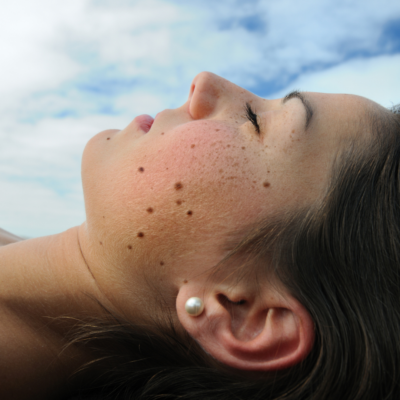What You Need to Know About Shingles
Shingles is an uncomfortable and painful skin condition. At California Skin Institute, we handle a wide variety of rashes and skin issues and have helped many patients struggling from shingles. Shingles can cause a great deal of discomfort, and in some cases lead to chronic pain. If you suspect you may be suffering from shingles, it is imperative that you seek immediate treatment. At California Skin Institute, we take every step to properly diagnose shingles in patients as quickly as possible and develop a treatment plan.
The most obvious sign of shingles is a rash that develops on the body or face, but there can be other symptoms, too, including fever, headache and chills. The rash is also typically accompanied by or preceded by a tingling or burning sensation and will begin to crust over a few days after it initially appears.
We’ve compiled some facts about shingles to help you navigate this irritating and painful condition. Here are five important points to keep in mind if you or a loved one develops shingles.
1. Shingles only occurs in individuals who have had chickenpox
If you’ve never had the chickenpox, you cannot get shingles. This is because shingles is caused by the varicella-zoster virus (VZV), the virus that causes chickenpox. Once someone has contracted it, usually at a young age, the virus stays dormant in the body, sometimes developing into shingles later in life.
There is a shingles vaccine available that is recommended for individuals 60 and over. Receiving the shingles vaccination does not guarantee that you won’t develop this skin condition. However, it can reduce the chances of developing shingles, or lessen symptoms if the condition does develop.
2. Shingles is not contagious, but the virus that causes it is.
A common question we often get here at California Skin Institute is whether shingles is contagious. Typically, shingles is not contagious except in cases of skin-on-skin contact with an open sore. Even then, shingles typically cannot be transmitted from one person to another, although the virus that causes it can be.
Someone exposed to the shingles virus through contact with the active rash (when it is in the blistering phase) will not get the condition itself, but could get chickenpox if they’ve never had it before. Therefore, it’s vital to wash hands thoroughly with soap and water after coming in contact with the rash. If you’ve developed shingles, it’s also a good idea to keep it well-covered when around others, to reduce chances of virus transmission.
If you’ve been diagnosed with shingles, it’s essential to avoid physical contact with individuals who have a compromised immune system, pregnant women, and children until your rash clears.
3. A low immune system can make you more susceptible
Individuals who are most susceptible are those with a compromised immune system. Shingles most commonly occurs in people 60 years old or older, people who have medical conditions that keep the immune system from working properly, or people who receive immunosuppressive drugs. Aside from vaccination, the best way to reduce your chances of developing shingles is to maintain a healthy lifestyle. A nutrient-rich diet, plenty of sleep and adequate exercise are some good ways to arm yourself against developing shingles, although there is no guaranteed way to prevent it.
The good news is that if you do develop shingles, this condition is highly unlikely to occur more than once in your lifetime.
4. Early treatment can help you avoid painful complications
Shingles may heal completely within two to four weeks without medical intervention. However, possible nerve pain can manifest at the site after the rash has cleared. This condition is called post-herpetic neuralgia (PHN) and it causes severe pain in the areas where the shingles rash was, even years after it has healed.
It’s essential to seek medical attention for Shingles as soon as possible in order to significantly reduce the chances of developing nerve pain. The earlier you seek treatment after the onset of initial symptoms, the less likely this pain will develop.
If diagnosed early enough, California Skin Institute providers may prescribe an oral antiviral medication that can treat treat the virus and prevent PHN.
5. Shingles is incredibly common. One in three people will get it.
According to the CDC, in the US alone, there are an estimated 1 million cases of shingles annually.
If you suspect that you or a family member might have shingles, don’t hesitate to schedule an appointment to see one of our dermatologists for a proper diagnosis and treatment.



 / 291 Reviews
/ 291 Reviews